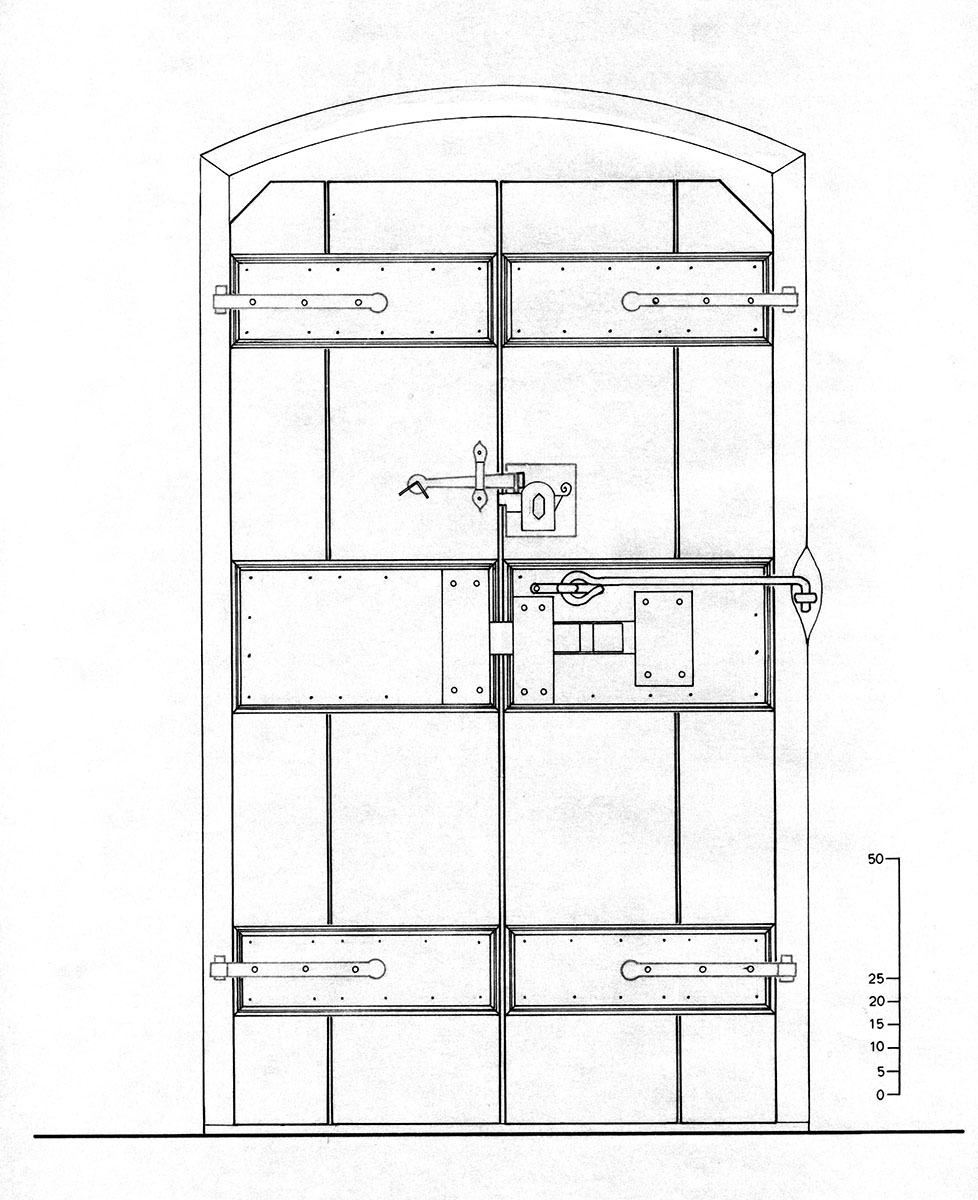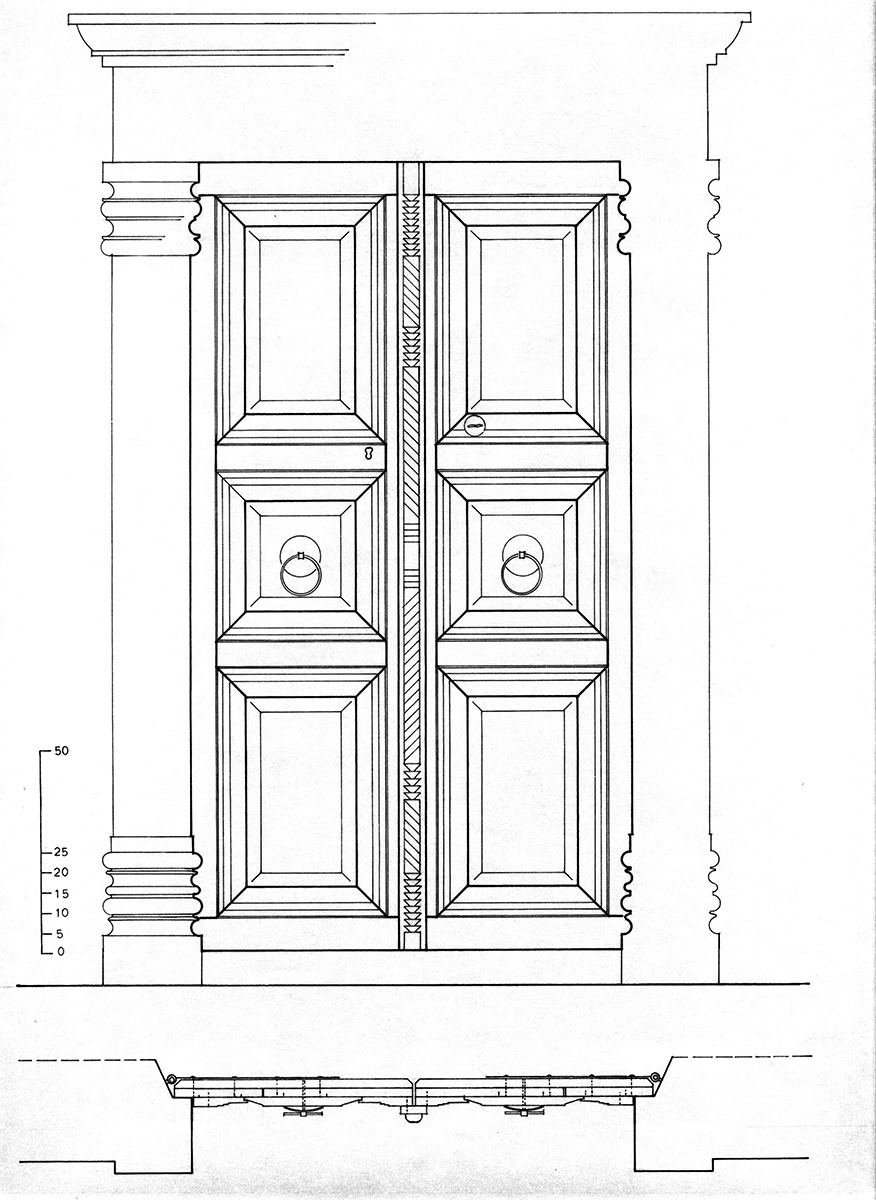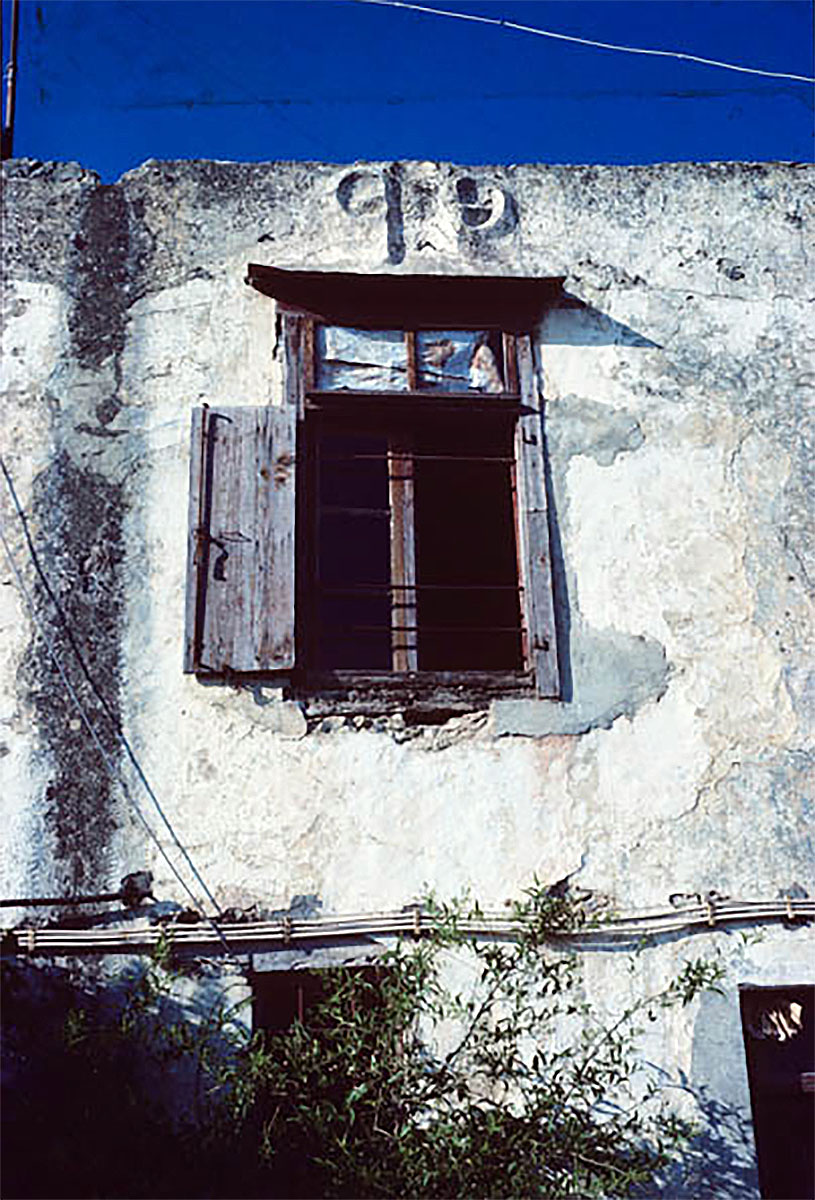Ironwork
Metallic structural elements
Apertures Of The Cretan House
The Cretan house is mostly built of stone. The apertures (the surrounding frameworks of doors or windows, known as casings) are created as the walls are built. Important considerations during building are the subsequent free operation of the wooden opening panels, whether doors or shutters, and the support of the superstructure. The size and shape of the openings depend on their intended use.

All the different parts of the casings are prepared on the building site. The vertical jambs (or lambades) and horizontal lintel (anofli) are made of local materials, usually dressed stones. Lintels intended for large apertures such as doors cannot be made of a single block of stone, but many pieces of different sizes (pelekia) which are hewn on the spot. A small window, on the contrary, can be comprised of single blocks.
When dressing the stones, the inner sides forming the jambs are beveled, as is the surrounding stonework, in order to facilitate the opening of the wooden door or shutter. The completed casing is thus trapezium-shaped in section, with the smaller base facing the outside and the larger the inside of the house.

The wooden doors and shutters are supported by metal fixtures set into the purpose-built recesses in the inner surface of the jambs.
The shape of the lintel bridging the gap between the two vertical sides of the opening is very important. The lintel was originally straight, but later low arched lintels of dressed stones (archivolts) were used.
The whole structure is designed to allow the door or shutter to turn freely on its hinges (maskoula), which are set into the inner surface of the jambs, near the corner of the rectangular recess. The hinges are set into the joints between the two dressed stones that comprise each jamb during construction.
Two hinges are placed one above the other on each side of the opening, as far apart as possible, in order to support double-leaved doors or windows securely.
In many cases, especially inner doors, the door is supported by a wooden casing in the absence of dressed jambs.

